#Nemertea
Explore tagged Tumblr posts
Text
realized I hadn’t fed my Geonemertes in two weeks, so I offered it an isopod. didn’t expect to see it strike, so the video isn’t the sharpest, but what a cool way of hunting!
the worm fires its sticky proboscis like a harpoon, presumably injecting venom at some point.
this is Geonemertes pelaensis, one of a scant few terrestrial examples of a mostly marine phylum (Nemertea). it’s an invasive species in the US and elsewhere, implicated in lowering counts of some soil arthropods.
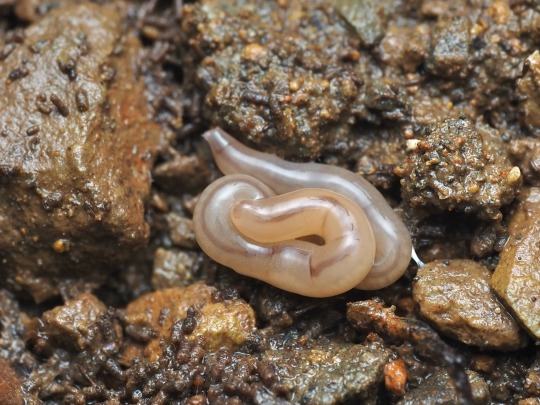
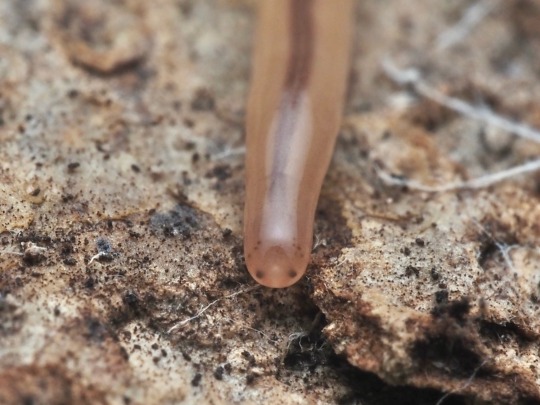
it also has a very cute face.

2K notes
·
View notes
Text
Phylum Round 1
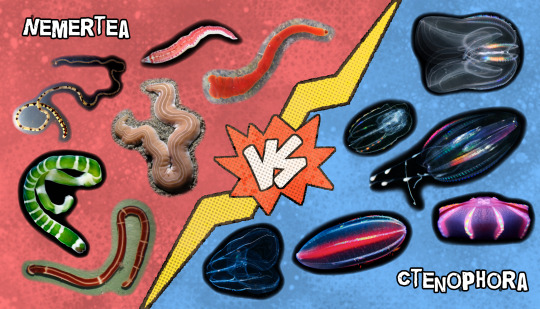
Nemertea: Ribbon Worms. These simple organisms are mostly seafloor-dwelling, but some may live in freshwater or even on land. Most are predators of small invertebrates, but some are herbivorous or symbiotic with a host. Instead of crawling, Nemerteans secrete a thick mucus and use thousands of tiny hair-like cilia to glide across the slimy surface. Their most distinctive feature is their internal proboscis, which can be everted inside-out of their bodies and used to capture prey.
Ctenophora: Comb Jellies. The largest animal phylum to swim using hair-like cilia. Their cilia are arranged in rows, called combs or ctenes, down the length of their body. The cilia move in a wave-like pattern that generates colorful reflecting light shows. Almost all Ctenophores are predators of small plankton as they drift in the ocean. They inhabit a variety of marine habitats from the coastal intertidal to the open ocean.
#nemertea#ctenophora#animal bracket#tumblr bracket#bracket tournament#poll bracket#phylum round 1#phylum
142 notes
·
View notes
Text

Common Atlantic Ribbon Worm (Tubulanus polymorphus)
Family: Tubulanus Family (Tubulanidae)
IUCN Conservation Status: Unassessed
Like other ribbon worms, this brightly coloured marine worm has a relatively long but extremely thin unsegmented body, and is an active predator; after locating prey using a set of chemical-sensing pits on its head it extends a sticky, flexible, tube-like appendage known as a proboscis (although unlike the proboscises of some insects this structure is separate from their digestive system) from just above it mouth, ensnaring prey and injecting it with paralysing venom. After prey (mainly smaller marine invertebrates, especially other worms) has been subdued the proboscis either passes it into a simple mouth or, if its too large to be swallowed whole, secretes fluids that break food down externally to accommodate for the worm's lack of an ability to chew.
--------------------------------------------------------
Image Source: Here
#Common Atlantic Ribbon Worm#ribbon worm#ribbon worms#proboscis worm#proboscis worms#Nemertea#nemertea#nemerteans#worm#worms#zoology#biology#marine biology#invertebrate#invertebrates#marine invertebrate#marine invertebrates
20 notes
·
View notes
Text
Taxonomy Tournament: Spiralia


Phoronida. This phylum is made up of marine filter-feeders, known as horseshoe worms
Nemertea. This phylum, known as the ribbon worms, is made up of mostly carnivorous worms with a proboscis
#animals#biology#polls#poll tournament#zoology#horseshoe worms#spiralia#ribbon worms#Phoronida#Nemertea#0x6ev0x91#animal tournament#Animal Tournament Round 1
65 notes
·
View notes
Text
February 13th, 2024
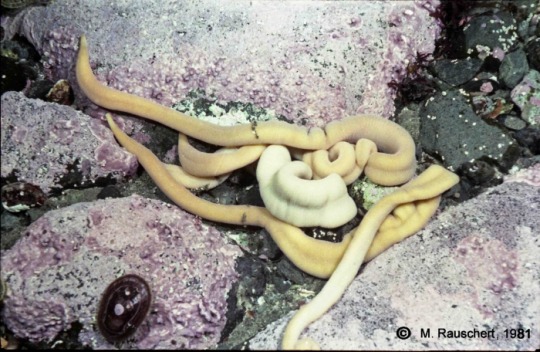
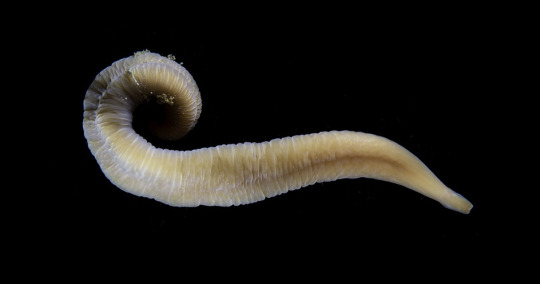
Antarctic Nemertean Worm (Parborlasia corrugatus)
Distribution: Widely distributed in the cold southern seas surrounding Antarctica, as far north as Peru.
Habitat: Epibenthic and marine; found in intertidal zones down to depths of 3590 metres.
Diet: Scavenger and predator; feeds on detritus diatoms, gastropods, amphipods, isopods, vertebrate carrion, sponges, jellyfish, seastars, molluscs, anemones and polychaete worms.
Description: P. corrugatus is a huge ribbonworm that can grow up to 2 metres in length. Like all ribbonworms, this species does not have a dedicated respiratory system, instead breathing through its skin; animals who breathe this way are typically quite small so the oxygen can reach every part of their body, which makes this worm's size even more impressive. Luckily, the Southern ocean is oxygen-rich, and the ribbonworm has a slow metabolism that uses up little oxygen. When it starts to lack oxygen, it flattens itself out to maximize oxygen diffusion throughout its body.
Despite its size, P. corrugatus still has predators. In order to defend itself, it has a proboscis it can deploy in moments, covered in barbs and adhesives (which it also uses to hunt its prey!). If this isn't enough to dissuade predators, it also has an acidic mucus with a pH of 3.5.
Images by Martin Rauschert and Jackson Chu.
15 notes
·
View notes
Text
Bootlace worm
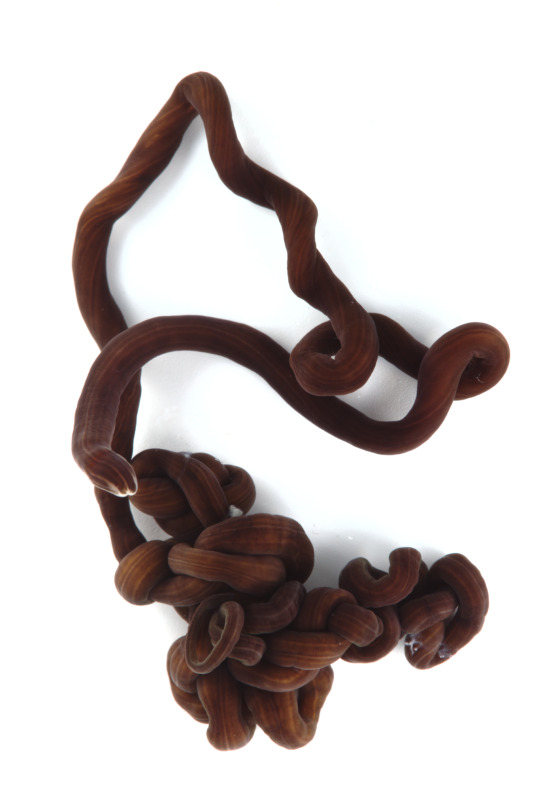
This is Lineus longissimus, a nemertean known as the bootlace worm. It's one of the longest animals in the world. A specimen caught in Scotland after a storm is thought to have been almost 60 meters long. Although this might be an exceptional case, there's enough evidence that these can reach about 30 meters (the length of a blue whale).
Reference:
https://brunovellutini.com/posts/lineus-longissimus-longest-animal/
Source:
#bootlace worm#lineus longissimus#nemertea#marine biology#animals#biodiversity#invertebrates#marine invertebrates#worm#wormblr#sea creatures#sea life
3 notes
·
View notes
Text

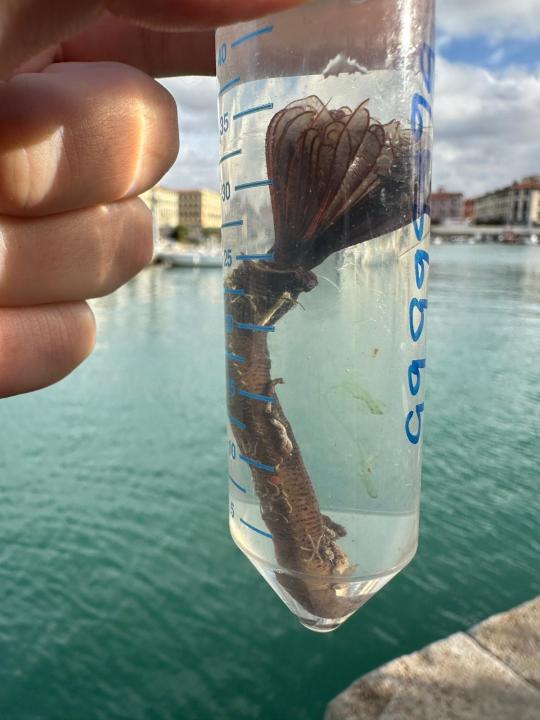


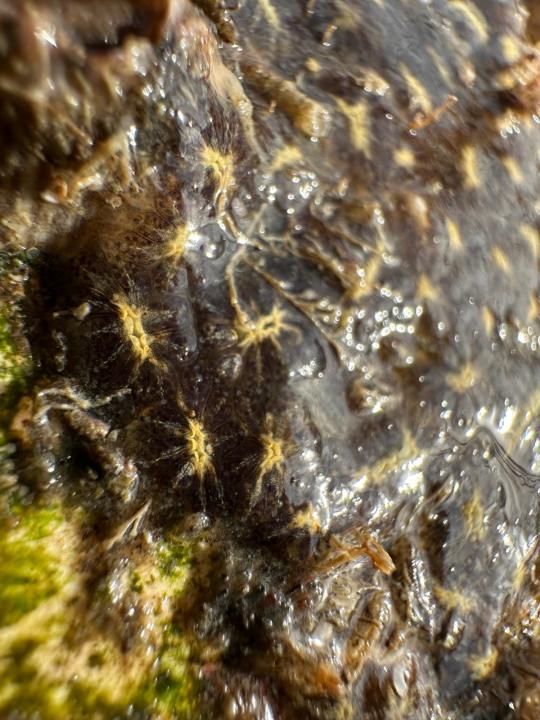

#BioMar#marine zoology#spirograph#fauling#portual fauna#polychaeta#Sabella spallanzani#Bryozoa#Ascidiacea#Nemertea#Annellida
5 notes
·
View notes
Text
i just want a url of an animal taxon that i like is that too mucb to ask
3 notes
·
View notes
Text
Round 1 Final Stats:
The top phyla have been ranked thusly, listed here from highest ranking to lowest:
🪲 Arthropoda ~ 2,002
🐠 Chordata ~ 1,780
🐌 Mollusca ~ 1,687
🪸 Cnidaria ~ 1,307
🫓 Platyhelminthes ~ 1,217
🔫 Onychophora ~ 1,180
🔬 Tardigrada ~ 1,101
🌈 Ctenophora ~ 1,013
⭐️ Echinodermata ~ 947
🪱 Annelida ~ 681
🧽 Porifera ~ 535
👥 Bryozoa ~ 331
⚪️ Placozoa ~ 328
⛱ Brachiopoda ~ 303
⚙️ Rotifera ~ 298
🍆 Priapulida ~ 216
🧲 Phoronida ~ 178
🌍 Nematoda ~ 169
🐉 Kinorhyncha ~ 169
🌰 Hemichordata ~ 169
🎉 Loricifera ~ 147
🎗 Nemertea ~ 138
❄️ Micrognathozoa ~ 124
🧪 Xenacoelomorpha ~ 123
🍴 Entoprocta ~ 111
👛 Cycliophora ~ 110
🦷 Gnathostomulida ~ 100
🏹 Chaetognatha ~ 83
🧶 Gastrotricha ~ 82
🐙🔍 Dicyemida ~ 19
🦪🔍 Orthonectida ~ 12
🐴✂️ Nematomorpha ~ -37
The top 3 phyla are Arthropoda, Chordata, and Mollusca!
This means Arthropoda, Chordata, and Mollusca will be moving on to Round 2, and broken up by Class (or some other phylogenetic equivalent).
But that’s not all!
After Round 2, we will have an extra Round 2.5, featuring every other phylum that received over 1,000 points! This will give some of the more highly ranked phyla a second chance to move on, and make Round 3 a little more interesting.
Round 2.5 will include Cnidaria, Platyhelminthes, Tardigrada, and Ctenophora.
(Unfortunately, I can’t include Onychophora as it only contains 2 families without class or order ranking, so I will have to preemptively move them forward to Round 4 ¯\_(ツ)_/¯)
To give myself enough time to queue up polls, Round 2 will begin November 1st.
See you then!
Extra Awards:
Phylum Porifera
~ had the highest percentage of likes at 50.8%
Phylum Placozoa
~ had the highest amount of neutral votes at 295
Phylum Xenacoelomorpha
~ had 0 hates
Phylum Platyhelminthes
~ had the most votes at 620
~ had the highest amount of loves at 245
~ had the highest amount of likes at 204
Phylum Gastrotricha
~ had the lowest amount of favorites at 2
~ had the lowest percentage of favorites at 0.7%
Phylum Mollusca
~ had 0 dislikes
~ had the third most reblogs at 86
Phylum Entoprocta
~ had 0 hates
Phylum Phoronida
~ had 0 hates
Phylum Orthonectida
~ had the lowest amount of likes at 20
~ had the least notes at 17
~ had the least reblogs at 6
Phylum Dicyemida
~ had the least votes at 158
~ had the lowest amount of loves at 4
~ had the lowest percentage of loves at 2.5%
~ had the highest percentage of neutral votes at 67.9%
Phylum Micrognathozoa
~ was our first single species to be ranked
~ had 0 hates
Phylum Rotifera
~ had 0 hates
Phylum Nematomorpha
~ had the highest amount of dislikes at 74
~ had the highest percentage of dislikes at 30.1%
~ had the highest percentage of hates at 11.4%
~ was the only phylum with a negative ranking
Phylum Onychophora
~ had the most notes at 310
~ had the most reblogs at 115 (though a lot of them happened after the poll closed)
Phylum Arthropoda
~ was the only phylum to get over 2,000 points
~ had the second most reblogs at 101
~ had 0 hates
Phylum Echinodermata
~ had the highest percentage of loves at 52.8%
~ was the only phylum to not receive any dislikes or hates
Phylum Chordata
~ had the highest amount of favorites at 334
~ had the highest percentage of favorites at 71.5%
~ had the lowest percentage of likes at 4.9%
~ had the lowest percentage of neutral votes at 0.6%
~ had the highest amount of hates at 37
#clearly there is a direct correlation between reblogs and votes!#chordata had the highest amount of favorites yes but Arthropoda had more votes and the positive votes add up!#and that was because more people reblogged the Arthropoda poll#anyway thank you all for voting!#hopefully I have given myself enough time and also y’all won’t lose interest by November#i run a paleoart challenge in November which will be taking up most of my time so i want to make sure I at least have all of November#queued up in advance#i’ll still be active here to answer questions and post extr propaganda though!#Statistics#extras#poll results#round 1
153 notes
·
View notes
Text
just watched this Geonemertes pelaensis catch a wolf spider! these terrestrial ribbon worms hunt by firing their proboscis at prey like a harpoon, envenomating them. this spider stopped moving instantly after the proboscis made contact—I’ll try to get a video of it next time… one of the most bizarre hunting techniques I’ve seen.
1K notes
·
View notes
Note
A friend of mine has a dog behavior challenge they're seeking advice for and I thought you might be able to help if you have time or direct them to someone who can! https://www.tumblr.com/nemertea/760896232858271744/does-anyone-have-any-good-resources-for-dealing
Here's a link for ease of clicking, but the issue overall seems to be "how do you cope with what seems to be a desire specifically to control a secondary animal's access to social resources rather than fear that the other animal will prevent the focal animal from accessing them?"
I really wish I had a clear set of resources for your friend, because it seems really similar to something I have been struggling with between Matilda (21 months) and my 13yo dog Tribble, in which Matilda appeared to want to herd Tribble into her crate and control her access to humans and social outlets. Working on this has been on pause for the past six weeks since Matilda's eye abscess exploded on us, but I'm beginning to pick it up again now: the dogs have been on crate and rotate since just before the eye abscess blew up, and that isn't a good long term solution, so now we see if we can actually resolve the problem.
My current opinion on how to move forward involves making it clear that I, the human, am not tolerating the "herding" behavior in my space and that it will result in being removed from the situation entirely. This means that you have to be able to prevent the dog causing the problem from redirecting onto the cat and doubling down when corrected, which is one of the failure modes I ran into initially. (It also means you have to rehab your cats' trust that you can and will fix the situation, and prevent your cats from inflaming the situation further by redirecting onto the problem dog.)
IDK, y'all, I'm still sketching out my treatment plan beyond the current stage, which is using shared licky mats with one dog crated to reduce the tension and memory of conflicts between the two dogs and replace them with memory of time spent licking in low-stress situations. We will be then leashing both dogs and spending time in the same room with (you guessed it) more licky and chewing time, with each dog rewarded for glancing at the other and disengaging. Eventually, I'd advance to both dogs leashed + direct interactions of the sort the "controlling" dog has tried to veto, and then treat that stimulus like reactivity counterconditioning: the "controlling" dog must sit without barking or pulling etc and will be body-blocked and interrupted if she tries to bother the other animal, but can earn infinite high-value rewards from simply looking quietly while the other animal receives the coveted attention.
Comments and suggestions from other trainers with similar experience would be welcomed, I suspect!
29 notes
·
View notes
Text
Official Phylum Bracket!
Below is the official matchup list for the Phylum rounds!
There are 33 phyla in the Showdown lineup, so after the polls close on Round 1, the winner of Xenacoelomorpha vs. Hemichordata will go up against Micrognathozoa in Round 1.5 before we move on.

How this bracket was created:
After assembling the list of phyla, I ranked them based on my best guess of how they would perform in the polls. I then split the list into the Top 16 and the Bottom 16 (minus Micrognathozoa), and created a bracket for each half using this site. I split up the list because it felt unfair not to give the less charismatic phyla at least a chance to compete! I've been affectionately calling the Bottom 16 matchups the "Micro-Royale" :) From there, I created a new bracket, alternating matchups between the Top 16 and Bottom 16.
Since Tumblr is probably going to crunch the image quality, the bracket matchups are listed in text format below the Keep Reading.
Round 1:
Round 2:
Arthropoda vs. Brachiopoda
Priapulida vs. Placozoa
Platyhelminthes vs. Onychophora
Loricifera vs. Gastrotricha
Annelida vs. Nematoda
Cycliophora vs. Gnathostomulida
Phoronida vs. Cnidaria
Dicyemida vs. Chaetognatha
Mollusca vs. Bryozoa
Nematomorpha vs. Orthonectida
Nemertea vs. Ctenophora
Acanthocephala vs. Tardigrada
Echinodermata vs. Porifera
Rotifera vs. Kinorhyncha
Entoprocta vs. Chordata
Xenacoelomorpha vs. Hemichordata
>> (Micrognathozoa will challenge the winner of this matchup)
Arthropoda vs. Placozoa
Onychophora vs. Loricifera
Annelida vs. Cycliophora
Cnidaria vs. Chaetognatha
Mollusca vs. Nematomorpha
Ctenophora vs. Tardigrada
Echinodermata vs. Rotifera
Chordata vs. Micrognathozoa
Round 3:
Arthropoda vs. Onychophora
Annelida vs. Cnidaria
Mollusca vs. Ctenophora
Echinodermata vs. Chordata
98 notes
·
View notes
Text
Taxonomy Tournament: Spiralia
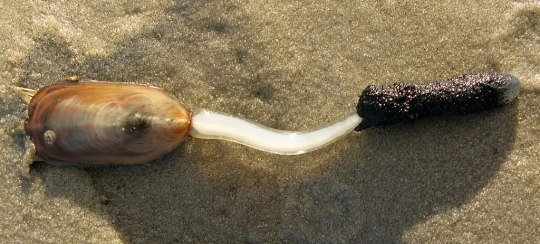
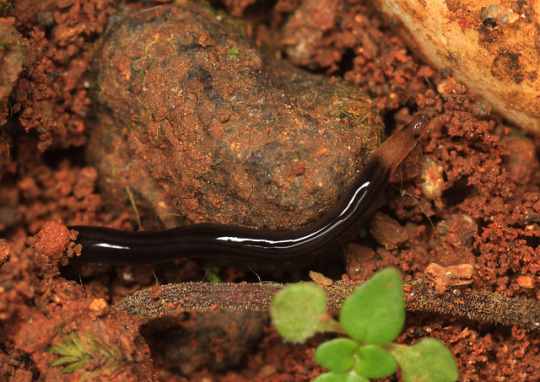
Lingulida. Brachiopods of this order have a long shell and a fleshy stalk with which it burrows into sand/mud. Includes Lingula, the oldest animal genus with species still alive today
Nemertea. This phylum, known as the ribbon worms, is made up of mostly carnivorous worms with a proboscis
#animals#biology#polls#poll tournament#zoology#brachiopods#spiralia#ribbon worms#Lingulida#Nemertea#0x11v0x6e
20 notes
·
View notes
Text
WAR AND HATE ON PLANET EARTH
WELCOME TO THE PHYLUM PHIGHT
A BRACKET WHERE THE 37 KNOWN PHYLA OF ANIMALS (extant and otherwise) WILL BATTLE TO THE DEATH. ONLY ONE MAY BE CROWNED CHAMPION-- AND ASCEND TO THE STATUS OF KINGDOM (i have this power)
WHO WILL IT BE? THE CHORDATES, CONTAINING EVERY KNOWN VERTEBRATE INCLUDING YOU AND ME? I FEEL LIKE THAT'S A BIAS. MAYBE THE HUMBLE TARDIGRADES, THE INTERNET'S FAVOURITE EXTREMOPHILES? OR WILL IT BE THE PENIS WORMS? I FEEL LIKE IT'S GONNA BE THE PENIS WORMS.
TOURNAMENT STRUCTURE:

ok ditching allcaps now <3
round 0
preliminary face-off between the odd phellas. lasting one (1) week to give bitches time to mobilise
protoarticulata VS rhombozoa
2. phoronida VS vetulicolia
3. petalonamae VS xenacoelomorpha
4. porifera VS rotifera
5. platyhelminthes VS saccorhytida
round 1
all round 1 poll-batches will last one (1) day because dear god there are so many of them. there will however be a cooldown of like, a couple days or something between batches because i am but one man
batch 1 - BATCH TO THE DEATH
6. priapulida VS winner of 1
7. annelida VS chaetognatha
8. trilobozoa VS micrognathozoa
9. bryozoa VS lorcifera
batch 2 - THE BATCHENING
10. tardigrada VS winner of 2
11. brachiopoda VS gastrotricha
12. mollusca VS winner of 3
13. nematomorpha VS gnathostomulida

batch 3 - BATCHETFIELD HIGH
14. chordata VS winner of 4
15. archaecyatha VS cycliophora
16. nematoda VS nemertea
17. ctenophora VS kinohyncha
batch 4 - I HAVE RUN OUT OF BATCH PUNS
18. arthropoda VS winner of 5
19. agmata VS entoprocta
20. cnidaria VS onychophora
21. echinodermata VS hemichordata
round three wait and see!!!
this bracket doesn't require nominations, as the candidates are already set out all nicey for us by Science. how cool of them. Now we make them beat each other senseless for our sick amusement :)
HOWEVER please send asks, suggest representative species or images to make sure we see them at their best, send propaganda/fun facts youd like the filthy electorate to know before they condemn your fav to the deepest most basal pits of taxonomic superhell. lets all get to know the Beasts together. Before we make them fight to the death.
-mod riz (he/him)

ROUND 0 START: APRIL 10TH
#phylum phight#phylum-phight-tourney#tumblr tournament#taxonomy#tumblr polls#tournament#poll tournament#animal tournament#biology#cnidaria#bryozoa#chordata#arthropod#echinoderm#molluscs
32 notes
·
View notes
Text
(not all inclusive bc there is an option limit but also tell me if your fave is missing, also would love to hear reasons why)
5 notes
·
View notes
Text
No, I think you’re thinking of Nemertea. Necrophilia is a far-right ideology that features xenophobia, authoritarianism, and ultranationalism disguised as populism, which emerged in the aftermath of WWII.
ONE OF MY FAVORITE VIDEOS EVER
44K notes
·
View notes